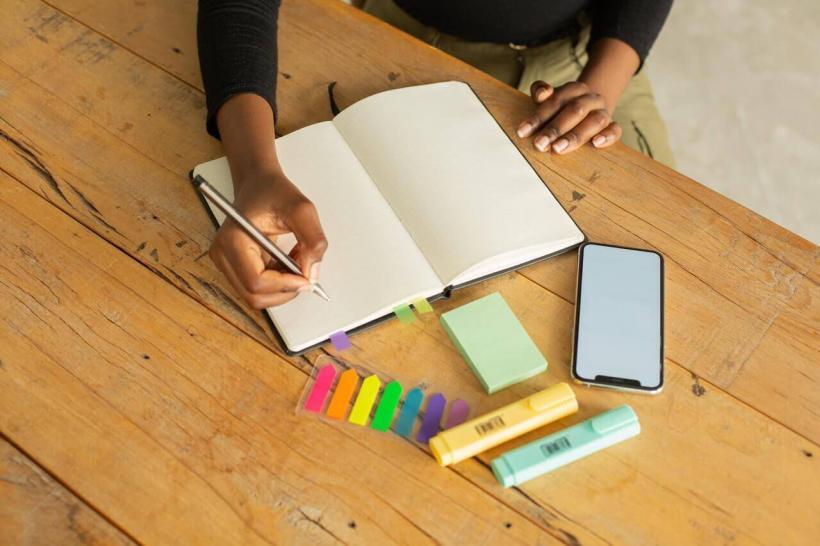Table of Contents
Our memories, the things we know, learn, and remember, make us who we are. Yet, forgetting seems to be part of human nature. How many times have you gone to the store for one thing and then returned with a few other items minus the thing you went there for? Or how often have you made the mistake of not writing down something important that the professor said, thinking you would not forget it, and then did?
Well, according to research, note-taking is an effective way of encoding information in a way that is better stored in your long-term memory. To put it simply, note-taking can help you remember. As students, you might be interested in learning more about the best way to take notes in college, so you can better understand and remember the valuable lessons from your courses.
Why Take Notes?
Note-taking provides several benefits related to understanding and remembering information. If you take notes in class, you will be more engaged with the material and avoid that feeling of drowsiness that can sometimes overpower students, especially during long lectures. You will also be simultaneously developing your organizational skills. The process of listening and choosing the most crucial information, highlighting key ideas, and identifying important structures, will come in handy in the future. Last but not least, you should take notes so that you are better prepared for the long study sessions once finals approach. Having notes will make the process of reviewing and studying much easier.
Best Note-Taking Systems
To know how to take notes in college, you should first understand the various strategies and choose the one that best fits you and the subject you are working on. Below, we will go through some of the most popular options, and hopefully, you will find one or more note-taking strategies for college that will be convenient for you.
The mind map
This note-taking strategy is ideal for subjects where there are many interlocking topics, such as philosophy, history, or chemistry. Let’s say you are discussing the theory of truth in a philosophy class. You place the name inside a circle in the center and then start to branch out the various theories your professor mentions. You can continue branching out more information linked to the previous theory circles, such as the definition for each one, what philosophers said about them, and anything else you deem important until your mind map seems complete.
Flow notes
If you are not a big fan of rules, then you will love this strategy. When taking flow notes, you can jot down anything you deem important in any way you want—write titles, words, doodles, arrows, and squares with information in them. As the name suggests, just let the information flow in any way that helps you engage with the material.
Writing on slides
This is the strategy that requires the least amount of effort to gather information. Professor put effort into summarizing and visualizing their lectures through the slides they presented. All you have to do is ask your professor whether they can share the slides from the class presentations with you. Then, go ahead and print them out so you can use them during your study sessions.
Bullet journaling
Sometimes, it is easier to review material through notes when they include lists and bullet points that you can quickly skim and scan. The bullet journal strategy of note-taking focuses on interpreting the central ideas through clear and organized notes. Although it might be difficult to write everything clearly and quickly during the lecture, you can adapt your notes from various strategies into bullet points once you review them at home.
The outline
One of the easiest methods of taking notes is by creating outlines. You begin by picking a few key points related to the lecture you are listening to, then under each one, write sub-points of information the professor provides. Although it is easier to write full sentences, this strategy is also messier and might need rearranging once you review it.
The Cornell method
Unlike the previous method, the Cornell one does not use long sentences but instead categorizes short notes into three main sections. Most of the page is taken by notes, such as names, dates, phrases, and so on. This column is placed on the right-hand side of the page. Then, to its left, you start listing keywords related to the lecture and your notes, and at the bottom of the page, you shortly summarize everything into a few sentences.
How to Take Notes in College?
Now that you know about the importance effective note-taking has, let’s go through some tips that can help you learn how to take notes in college. If you are focused and determined while taking notes and studying with them, you will crush all the finals that come your way.
Get organized
Regardless of the method you use when taking notes, the important part is for you to be able to understand them when revising. So, be organized when taking notes. Act as though you will be sharing notes with someone who was not in class and needs to understand the lecture through them. Once you have started to forget the things your professor mentioned, you will be grateful to yourself for being precise and thorough with the information gathered.
Use space meaningfully
✅ Request information on BAU's programs TODAY!
Would you rather read a text with a clear title, subtitles, keywords in bold, and important information underlined, or one long text with letters that all look the same? Surely, you would benefit more from the former type. Have that in mind when taking notes and use the space you have meaningfully.
Determine the note-taking strategy that fits you best
Are you quicker when writing on paper or typing on a screen? Which method of note-taking comes naturally to you? To benefit from your notes, you have to find the answers to those questions. Only when you feel comfortable with the way you take notes will you truly be doing effective note-taking.
Write neatly
Imagine spending all that time and energy taking notes, only to struggle reading your own handwriting when you need it the most. If you use paper for note-taking, then you should write as neatly as you can. We are aware that writing quickly and neatly at the same time can be difficult. But, this might be a sign that you should switch to another note-taking strategy that provides you with enough time to be neat.
Keep your notes short
Although it might be tempting to try and quickly jot down everything the professor says, this method will not work. Your notes are supposed to help you reflect on the material. They are not supposed to be transcripts of the lecture. Write short but understandable notes that you can further research when studying later on.
Use abbreviations
A good way to help keep your notes short is the use of abbreviations. Whether it be popular abbreviations or ones you create, they will help save time and space on your paper while still maintaining the necessary information that you can use to study.
Use visual elements
Notes are not all about words. You can also include visual elements to indicate concepts from the lecture. Consider drawing instead of using words for a particular idea. Another way you can use visual elements is through pictures. If your professor allows it, take pictures of the presentation slides that he shows when explaining difficult notions.
Number your pages
The last tip we provide you with is to number the pages of your notes. It is always better to be safe than sorry. If you ever drop your binder or misplace the papers with your notes, you can quickly put everything in the right order by looking at the page numbers.
Vincent Van Gogh once said that great things are done by a series of small things brought together. All your mind maps, titles, subtitles, phrases, and sentences scribbled on paper will come together and help you remember.












